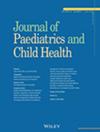Markers of Metabolic Bone Disease in Extremely Preterm and Very Low Birth Weight Infants: A Four-Part Cohort Study Spanning Changes in Clinical Approach
Abstract
Aim
Analyse the association of markers of metabolic bone disease of prematurity (MBDP) with different clinical approaches to MBDP prevention and management.
Methods
Four-part cohort study in a tertiary neonatal unit between 2015 and 2023. Eligible infants were born under 28 weeks' postmenstrual age or under 1.5 kg birthweight. Four 1-year periods were included. Baseline cohort received routinely unfortified breastmilk and universal phosphate supplementation. Second cohort received routine breastmilk fortification and universal phosphate supplementation. Third cohort received routine breastmilk fortification and parathyroid hormone (PTH) monitoring with targeted calcium/phosphate supplementation. In the fourth cohort, the PTH threshold for supplementation was increased.
Results
About 329 infants were included. The highest ALP concentration increased between cohort 1 and 2 (median 466 IU/L; IQR 332–581, median 529 IU/L; IQR 439–809) and remained stable in cohort 3 and 4 (median 570 IU/L; IQR 412–850, median 665 IU/L; IQR 480–868). There was no change in the incidence of osteopenic bone fractures (1/72, 0/84, 0/85, 1/88) or osteopenia on clinical radiographs (4/72, 4/84, 4/85, 7/88). Multivariable analysis identified lower 25-hydroxyvitamin D, lower birthweight and higher birth gestation as the variables independently associated with higher ALP concentration. Multivariable analysis identified lower 25-hydroxyvitamin D, lower ionised calcium, lower birthweight and maternal ethnic minority background as the variables independently associated with higher PTH concentration.
Conclusions
There was no improvement in markers of MBDP with routine fortification of breastmilk or the use of PTH-targeted mineral supplementation. This may be due to the high level of 25-hydroxyvitamin D deficiency in this cohort, as lower 25-hydroxyvitamin D was associated with higher PTH and ALP.


 求助内容:
求助内容: 应助结果提醒方式:
应助结果提醒方式:


